Inspecting assets in the energy industry poses numerous challenges for energy companies. However, the use of drones has proven to be a crucial solution in sectors such as wind, solar, gas, and oil.
Unlike traditional inspection methods, which can be dangerous, time-consuming, expensive, and inefficient, drones have revolutionized the process by providing a safer and more efficient way to collect data for inspections.
With modern drone technology, energy companies can now easily inspect infrastructure that was previously difficult or impossible to reach using manual inspection methods.
Top pick
DJI Mavic 2 Enterprise
This drone model boasts a 1/2 inch CMOS 48 MP visual camera coupled with a 640×512 radiometric thermal sensor.
Editor’s choice
Autel Robotics EVO II
The thermal proficiency of this drone proves indispensable in pinpointing roof leaks and insulation irregularities.
Best value
DJI Matrice 300 RTK
The array of available payload choices encompasses a diverse range of visible and thermal cameras.
Best Drones For Energy Inspection Reviews
1. DJI Mavic 2 Enterprise Advanced
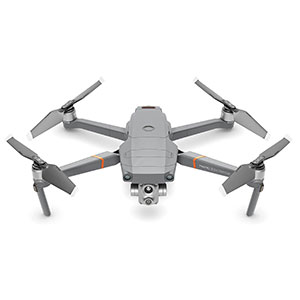
The Mavic 2 Advanced is a high-performance drone specifically designed for dual imaging capabilities. While it does not have the option to interchange payloads, it comes equipped with an integrated thermal sensor and a 4K zoom camera. The infrared sensor offers an impressive 16x zoom, 640 x 512 resolution, and a rapid 30 Hz frame rate, allowing for precise temperature measurement within a 2°C accuracy range. On the other hand, the 4K visual camera excels with its 48 MP resolution, 4x lossless zoom, and remarkable 32x digital zoom, making it perfect for capturing intricate details.
One of the key features of the Mavic 2 Advanced is its OcuSync 2.0 transmission system, which provides strong protection against electromagnetic interference caused by power lines. With a transmission range of up to 6.2 miles (10 km), it enables seamless transitions between visual, thermal, and split views on a single screen, streamlining the inspection process.
Similar to some other drones in our collection, the Mavic 2 Advanced incorporates omnidirectional obstacle sensing and DJI AirSense, offering real-time updates on airspace conditions. Additionally, the option for RTK positioning, which ensures centimeter-level precision, can be added separately.
With its compact yet durable design, the drone is conveniently foldable for easy portability and can operate within temperature ranges of 14°F to 104°F (-10°C to 40°C). Furthermore, the Mavic 2 Advanced provides password protection, giving you peace of mind by restricting unauthorized drone operation.
2. Autel Robotics EVO II
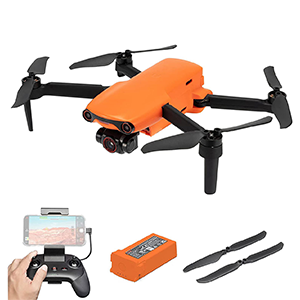
The Evo 2 Dual 640T RTK is a compact drone that is highly capable and comes with integrated visible and infrared cameras. The visible camera has an impressive 4x lossless zoom capability and can record 6K video at a maximum streaming speed of 120 Mbps. It can transmit video up to an impressive distance of 5.6 miles (9 km) and has a maximum service altitude of 3.7 miles (6000 m).
The infrared sensor of the drone offers superior thermal imaging resolution, allowing for precise temperature measurement within a range of 6.5 to 16.4 feet (2 to 5 m) from the heat source, with an accuracy range of 3°.
As the name suggests, the Evo 2 Dual 640T RTK introduces RTK positioning technology. It also features post-processed kinematic (PPK) positioning, which further enhances accuracy. PPK, similar to RTK, uses GPS technology to correct location data, but it does so after the data has been collected and uploaded into mapping software.
With a flight duration of 36 minutes and a top speed of 65 feet per second (20 m/s), the Evo 2 Dual 640T RTK is efficient for power line inspections. It can operate within temperature ranges of 14°F to 104°F (-10°C to 40°C), showcasing its versatility. Additionally, its 6-directional sensing system ensures comprehensive 720° obstacle avoidance.
For those in need of a fast and reliable solution for power line inspections, the Evo 2 Dual 640T RTK is an excellent choice. Its foldable design and reliability make it a superior option.
3. DJI Matrice 300 RTK
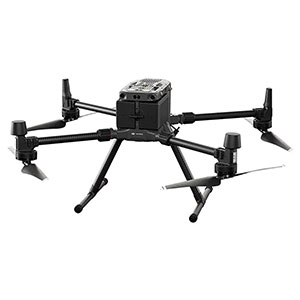
The Matrice 300 RTK is an outstanding choice for power line inspections due to its exceptional features. One of its notable attributes is the advanced dual control system, which allows a secondary pilot to take control during flight. This feature is particularly valuable for extensive inspections as it distributes operational responsibility between two pilots instead of relying solely on one.
As its name suggests, the Matrice 300 RTK is equipped with cutting-edge real-time kinetic (RTK) positioning capability. By utilizing live GPS data, RTK ensures precise drone positioning during flight. This capability is crucial for power line inspections as it helps maintain accurate flight paths and prevents costly collisions.
Furthermore, RTK positioning instills confidence in automated routine inspections by minimizing the risk of human piloting errors. Additionally, the drone’s 6-directional sensors enable it to autonomously navigate around obstacles and maneuver through hazardous power line environments.
Although the Matrice 300 RTK does not come with a payload, it is compatible with DJI’s Zenmuse series and third-party payloads. For optimal results, it is recommended to pair the Matrice 300 RTK with the Zenmuse Z30, which offers a 30x optical zoom, or the Zenmuse H20T, which includes a laser rangefinder (LRF), visual zoom camera, and thermal camera. Furthermore, third-party payloads can further enhance its capabilities, making it adaptable to various scenarios.
The drone boasts an impressive flight time of 55 minutes under payload-free conditions. When equipped with the Zenmuse H20T, the flight time is approximately 40 minutes, while a lighter payload like the XT2 provides around 46 minutes of flight time. It is important to note that the flight duration may vary depending on the payload type, mission objectives, and prevailing weather conditions.
4. DJI Matrice 210 V2
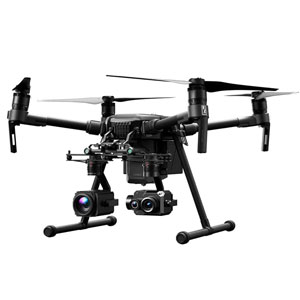
The DJI Matrice 210 RTK V2 offers a more cost-effective option in the DJI drone lineup for power line inspections. What sets this drone apart is its strong set of anti-collision features. It includes RTK positioning and obstacle avoidance sensors to ensure precise navigation.
Moreover, the drone is equipped with an anti-collision beacon to improve visibility to other aircraft and features DJI AirSense, providing real-time information on airspace conditions. This comprehensive safety system significantly reduces the risk of collisions.
The Matrice 210 RTK V2 is available with either a single upward-facing or dual downward-facing gimbal configuration. The latter allows for the attachment of two different payloads, which is particularly advantageous for combining a visual camera with a thermal camera. For example, pairing the Zenmuse Z30 with a thermal imager creates a powerful combination for thorough inspections. The Zenmuse Z30 offers an impressive 30x zoom, enabling detailed scrutiny from distances of up to 33 feet (10 meters).
One notable feature of the Matrice 210 RTK V2 is its encrypted data transmission, ensuring the secure preservation of inspection data during flight operations.
If you are in need of a reliable drone with exceptional collision-avoidance capabilities, the Matrice 210 RTK V2 is a commendable choice. However, it’s important to note that this model is no longer actively produced, which may affect the availability of new units and batteries in the future.
5. Parrot PF728000 ANAFI
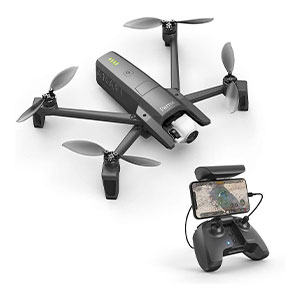
The Parrot-developed Anafi drone has gained significant recognition in the drone industry. Despite its incredibly light weight of only 1.98 pounds (898 grams), it offers an impressive range of features. What truly distinguishes this drone is its innovative use of the Verizon 4G LTE cellular network for communication, allowing it to operate in areas with cellular coverage. Additionally, the drone has the unique capability to seamlessly switch between 4G and WiFi connections, providing it with an extensive operational range.
Of course, the flight duration is dependent on the drone’s battery life, but even at a maximum of 32 minutes, it can cover considerable distances. This makes it particularly suitable for tasks such as power line inspections, where it can reach a top speed of 34 miles per hour (55 kilometers per hour).
The Anafi drone showcases an expanded gimbal tilt range of -90° to +90°, ensuring optimal viewing angles for power line assessments. It is equipped with a 48-megapixel HDR10 camera that offers 6x zoom capabilities and is augmented by two stereoscopic cameras for obstacle avoidance. The drone captures and transmits 4K 1080p video from altitudes of up to 1640 feet (5,000 meters) above sea level.
Importantly, the Anafi drone is designed with photogrammetry in mind, simplifying the process of mapping power line routes. It features convenient MicroSD and SIM card slots, facilitating effortless data transfer and connectivity. Furthermore, the drone’s software incorporates an open-source software development kit (SDK), allowing for the creation of customized drone navigation applications to meet specific requirements. The handheld remote is designed to accommodate your smartphone, ensuring a smooth takeoff into the skies.

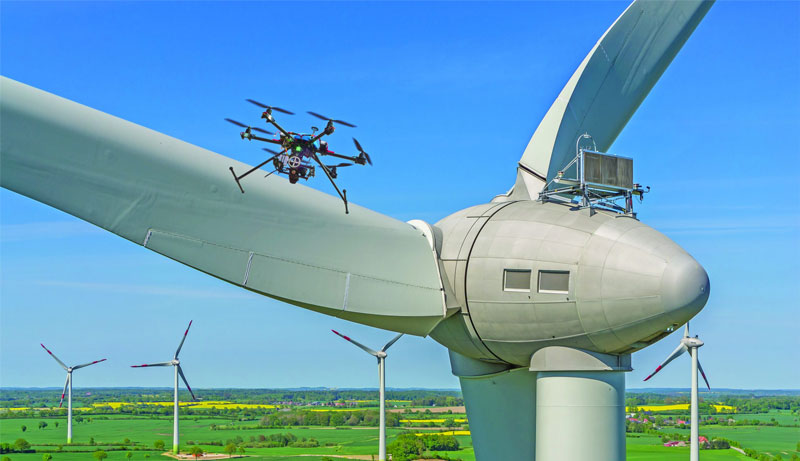

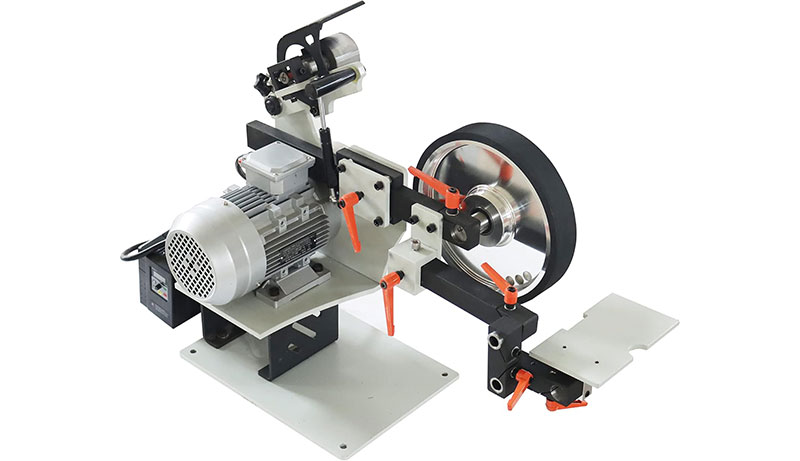
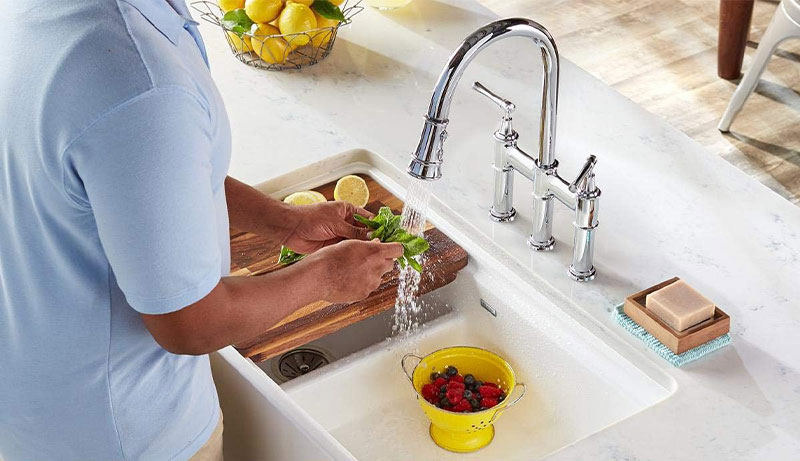
Leave a Reply